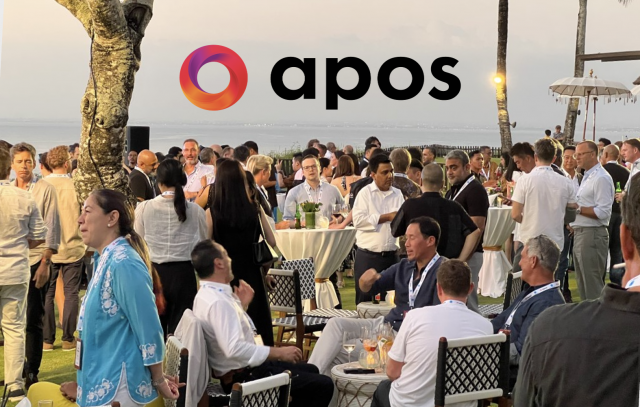
This year’s 2023 APOS conference did not disappoint! As the defining voice for the Asia Pacific Media, Telecom and Entertainment industry, it hit all the expected topics, attracted a diverse delegate list, and facilitated rich panel discussions over the two days. Initial exchanges before the conference provided a glimpse into the broader expectations attendees had for the panel discussions. From casual corridor conversations with fellow industry professionals, touching on topics ranging from the industry’s trend towards service aggregation to the significant shifts in the advertising landscape, user data privacy concerns, and piracy challenges in the region all commanded attention.
Streaming and Service Aggregation, India Accelerates Forward
As digitalization and cord-cutting continue in APAC, streaming indisputably remains the leading agent of change. However, it’s not just about providing content anymore; it's about the convenience of providing a rich and extended user experience. Tata Play’s announcement at APOS was the perfect example of providing such a consumer-centric experience; a platform offering impressive access to the content of 25 OTT service providers through a unified interface via a single login and subscription. Add to this an interesting discussion with a representative from INDIAN Television Dot Com about the forecasted rise of Connected TV (CTV) and Free Ad-Supported Television (FAST) in India, and it became clear that APAC is at the forefront of the next streaming revolution.
Local Content Takes To The Global Stage
While international collaborations are crucial, there is undeniably a strong focus and demand in the region for local and Asian content. In Indonesia for example, regional and local Asian content accounts for more than 75% of the viewership. This shift is not just about catering to local audiences but also about exporting local content to international platforms, as Asian content keeps gaining popularity globally and opportunities are presented for it to be either included in aggregated propositions or featured as a standalone D2C service. Taking for reference the success story of Paramount’s collaboration with Walmart in the U.S., similar strategic partnerships with local entities can also be the catalyst for a brand's resonance to a more region-centric audience, whether it's in content creation or via the extension of retail membership subscriptions.
AI and Machine Learning – Time to Go Beyond the Hype?
Far from all the recent Hollywood tumults, generative AI was also a key theme during the event with key industry players sharing how AI is already being used today across a wide variety of applications. From detecting piracy and optimizing content recommendations to more interesting use cases around content production and delivery - such as creating dubbing, subtitles or authoring various script versions to gauge audience reception. We also learnt that machine learning isn't far behind either with use cases including crafting personalized ads for consumers and predicting content load for live events such as sport. Finally, Amazon Web Services (AWS) also announced their aim to enable anyone to build generative AI applications through their bedrock foundation platform. All this provided insight on not only where the industry is going, but also how AI is already a key part of the content production and delivery chain.
The Reshaped Ad Economy
During the session about advertising, a representative from Google shared that 75% of the advertising economy is attributed to video content (that can include everything from movies through to user-generated content), 25% is attributed to platforms like YouTube for music and connected TVs are increasingly being seen as the next new platform to see a significant breakthrough. But while we are witnessing a metamorphosis, it is not just about the platforms anymore, but about innovative approaches and the leveraging of new technologies. AI for example is already being used across multiple markets to create international content. Machine Learning helps create targeted ads for consumers and Augmented Reality (AR) is making headway into social media, allowing users to virtually 'try on' products. All this is shining a new light on the ad economy and how it contributes to closing the gap between the consumer and the brand by further optimizing digital interactions and physical retail.
A New Paradigm for Data
When it comes to offering a personalized experience, consumer data has become an invaluable asset for Media & Entertainment service providers. And yet at the same time subscriber data has always been a complicated topic in terms of privacy and regulation. An important takeaway from the event was the emerging consensus on users owning their data, as discussed during the panel with Zee5. This shift to a more hybrid on-premises and cloud model where user data are being hosted privately and accessed under specific anonymized form or conditions could redefine user-platform relationships and the dynamics of content recommendations and personalization.
APOS 2023 – A Beacon of Opportunity
The APOS 2023 conference served as a beacon, highlighting likely trajectories for the M&E industry in APAC over the next few years. The emphasis on digital strategies, the blend of local and global, and the pivotal role of AI and machine learning are clear indicators of an industry that keeps evolving. Stakeholders, from content creators to advertisers and platform providers, must remain agile, innovative, and, most importantly, in tune with the ever-evolving consumer pulse.
At NAGRA, one of our core objectives is to help the M&E industry navigate the technical and business challenges associated with digital transformation and subscribers increasingly connected digital lifestyles. “The idea of a super app isn’t new to anybody anymore, the next generation of what else we offer to consumers is where the challenge is” commented Nancy Goldberg, EVP, and Chief Marketing & Sales Officer at NAGRA during her panel with Kishore AK, CTO at Zee at APOS 2023. The NAGRA OpenTV Platform can help operators to deliver an innovative world class digital experience. Driven by AI-powered personalization and discovery, the solution enables operators to offer consumers a tailored experience across all forms of media. Extending beyond video to also include online games, user generated content, mixed reality, or digital services such as retail ecommerce and lifestyle services, subscribers can answer all their media needs and M&E service providers can deliver a service that improvs customer satisfaction and engenders loyalty.
To learn more about digital experience platform solutions offered by NAGRA, visit our OpenTV Video Platform page. Alternatively, to hear more about how we’re helping our customers migrate towards the new digital economy or to have a chat to one of our APAC-based solution experts who are actively working to help address today’s industry pain points, just get in touch; we’d love to continue the conversation.

